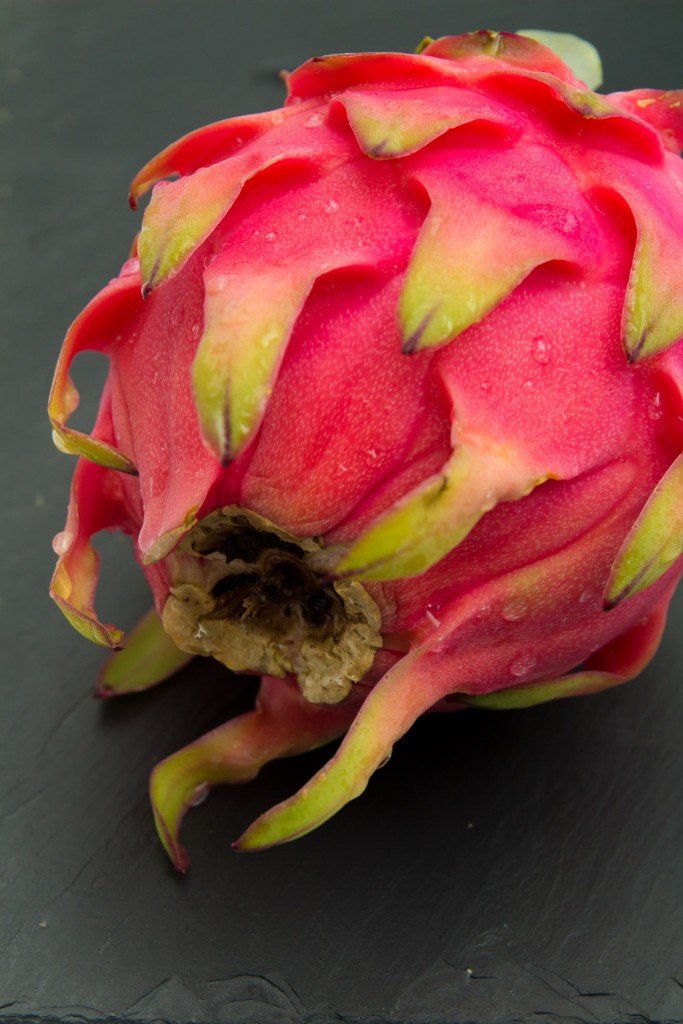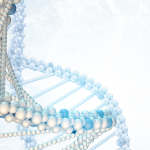Mark Swanson, ND
This month’s Expert Report is as much a demonstration of the power and art of the English language as it is a 3-dimensional look at the diverse actions of polyphenols. It is my pleasure to introduce Kelly Heim, PhD, whose work is driving a new and exciting era in the science and understanding of polyphenols. His passion for presenting the behavioral relationships and mechanisms that drive the diversity of polyphenols is an illustration of his adept ability to communicate the science in a language of pure fluid mechanics and melodic harmony. If it all could be put to music, it would be nothing short of a breathtaking classical concerto. Our interview captures just enough of its movements by appreciably focusing on the antiallergy aspect of polyphenols. Dr Heim’s words from the world of polyphenomic science actually come alive when read aloud. Try it. You’ll be glad you did!
Dr Heim, what are your educational background, research interests, affiliations, and current position?
In 2002, I published a widely recognized review on polyphenols while a nutritional biochemistry student at the University of New Hampshire [Durham]. I went on to receive my PhD in pharmacology from Dartmouth Medical School [Hanover, New Hampshire]. My work at Dartmouth involved the regulation of gene expression by vitamins and metabolic signals. Upon completing my dissertation, I had come full circle, once again in the realm of nutrition but with a functional genomics perspective. I recently authored an invited book chapter on how some of these molecules bridge nutrition, gut microbiomics, and nutrigenomics. I coined the term polyphenomics to address these complex interfaces. I am currently a pharmacologist in research and development at Pure Encapsulations [Sudbury, Massachusetts].
You are an elite expert in a newer understanding of functional polyphenol science, especially in the expanding area of genomics and nutraceuticals. Can you give us an example of this?
Polyphenols are exemplary liaisons between food and genes and curiously supple with regard to their interactions with cellular molecules. They tap the genome and the proteome from oblique angles. A single polyphenol can function therapeutically by blocking a kinase that controls a transcriptional regulator. At the same time, it can hit the transcription factor itself. It may even alter the architecture of chromatin around DNA bound by that factor.1 Essentially, cellular responses to external cues occur in relays, and polyphenols tactfully collide with multiple nodes to elicit a stable nontoxic therapeutic or preventive response. For example, binding of IgE to a basophil engages a cascade of kinases, leading to calcium translocation and degranulation of inflammatory mediators. Flavonoids hit all of these points.2 This is in stark contrast to the drug montelukast, which solely targets the inflammatory mediators. Hitting multiple regulatory nodes with marginal affinity is safer and less likely to produce adverse compensatory and possible destabilizing effects in cells over time.
The terms polyphenols and flavonoids are commonly used interchangeably but apply only to a certain extent. What are the primary distinguishing differences?
Polyphenol refers to a very general category of over 8000 natural plant compounds defined by the presence of 2 or more hydroxylated aromatic rings.3 Flavonoids are a specific subclass of polyphenols defined by the presence of 2 aromatic rings bridged by an oxygen-containing ring. Relative to most dietary polyphenols, flavonoids (which include quercetin and luteolin) are of low molecular weight. Flavonoid polymers known as proanthocyanidins, which reach extraordinarily high molecular weights, are most prevalent in food.4 Resveratrol and curcumin are examples of atypical, nonflavonoid, nonproanthocyanidin polyphenols.
Polyphenol mechanisms and nutraceutical applications read like a wonder class of “anti” do-all and treat-all plant constituents. They are uniquely anti-inflammatory, antioxidant, antiperoxidative, anti–platelet aggregation, antitumor, antiulcer, antithrombotic, antivasoconstrictive, antihypertensive, antidiabetic, antihepatotoxic, and antiallergy. What is the unifying characteristic that links all these “anti” actions of the polyphenols?
There are many theories on why polyphenols are “promiscuous.” One asserts that polyphenols modify redox-sensitive proteins and pathways in cells, which is a corollary of their powerful antioxidant activity. Fortuitously, there are a multitude of disease-relevant signaling pathways and genomic transcription factors that are redox sensitive. A second theory holds that polyphenols bind multiple proteins directly with low affinity and low selectivity.5 However, there must be some decisive order in their workings to explain the absence of multiple adverse off-target effects. How polyphenols execute a casual yet coordinated form of selectivity remains controversial.
For this interview, we are going to focus on the last one—the antiallergic polyphenols (inhalant and food)—and any nonpolyphenol cosynergists, which may provide a therapeutic partnership. What would be on Dr Heim’s top polyphenols list?
Quercetin, hesperidin, luteolin, apple, and perilla are my top 5 interventions for allergic conditions. Quercetin is the most familiar and extensively researched flavonoid for atopic disease. Very close structural analogues of quercetin (such as hesperidin and luteolin) are also effective and share the same mechanisms. Apple and perilla extracts provide a complex mixture of polyphenols of diverse molecular weights, and there is good research supporting efficacy. Although not polyphenols, probiotics may potentiate the effects of these preparations through additive or synergistic mechanisms.
What makes these 5 polyphenols stand out among other flavonoids as antiallergy plant compounds?
The strength of supporting data is strongest for these interventions. Also, this list can be used as a descending-order protocol. The first-line selections, quercetin, hesperidin, and luteolin, are single compounds. They are rapidly absorbed within 20 minutes, reach peak plasma concentrations up to 2000 times higher than other polyphenols (such as resveratrol and curcumin), and remain in plasma for at least 3 hours. However, nonresponse occurs in a subset of patients and may be due to biochemical individuality, antagonistic dietary constituents, or covert genetic polymorphisms. In those cases, apple and perilla extracts are prudent alternatives or adjuvants.
Apple polyphenols are truly amazing. They really seem to do it all. What does the research say about an apple a day to keep the allergist away?
Unlike the single flavonoids, apple extracts present a mechanistically and pharmacokinetically diverse complement of polyphenols. Therefore, genetic variations and other individual hurdles are more likely to be circumvented. Simple flavonoids comprise less than 20% of whole unripe apple extracts. The remaining polyphenols are proanthocyanidin oligomers and polymers, which favorably modify the gut microbial climate and are converted to low-molecular-weight bioavailable simple phenolics.4
Perilla seed extract with luteolin polyphenol is an especially potent free radical scavenger and inhibitor of 5-lipoxygenase and leukotrienes. Please elaborate. What kinds of allergies benefit the most?
The only difference between quercetin and luteolin is the absence of a 3-hydroxyl group in the latter. Luteolin may be more effective than quercetin in leukotriene inhibition, partly because luteolin cannot undergo phase II metabolism at the 3-position due to the absence of a hydroxyl group.6 Luteolin may also be a better inhibitor of AP-1, a genomic transcription factor that induces interleukin genes.7 Perilla extracts also contain the nonflavonoid polyphenol rosmarinic acid, which inhibits nasal neutrophil and eosinophil infiltration.8 Perilla extracts are chemically diverse, and in monotherapy-refractory patients apple and perilla preparations can be used in tandem to maximize phytochemical diversity and possibly dodge refractory therapeutic targets. Seasonal allergic rhinoconjunctivitis is the most substantiated indication.
Products often combine quercetin with bromelain to help improve quercetin’s absorption, bioavailability, and antiallergy effectiveness. Is this a valid assumption? Wouldn’t a combination with some of the others you mentioned be even better?
The fibrinolytic and anti-inflammatory effects of bromelain suggest antiallergic utility. To date, no published human pharmacokinetic research has supported enhanced bioavailability or efficacy of quercetin by concurrent bromelain administration. Combining multiple polyphenols is a more rational evidence-based approach.
How has modern technology tweaked these natural compounds to advance them as nutraceutical alternatives to allergy medicines?
Of the 4000 flavonoids, quercetin is one of the few that are available as an isolate. As such, it performs fairly well in terms of absorption. Absorption can be further enhanced by adding or modifying a glycosidic moiety, as with isoquercetin. Cyclodextrin conjugation is another technology for which quercetin is an ideal candidate. However, I anticipate a subset of bioavailability enhancers to be polyphenols themselves. Some polyphenols can smash the roadblocks that limit the pharmacokinetic performance of other polyphenols. These barriers include cytochromes p450, phase II conjugation, and efflux transporters.9 Product formulation should focus on delivery platforms and strategic combinations alike.
Tell us about the functional interplay of some specific probiotics acting as cosynergists. How do the gastrointestinal flora and polyphenols combine as harmonious antiallergy partners?
Bifidobacterium longum BB536, Bifidobacterium lactis, Lactobacillus acidophilus, Lactobacillus casei, and Lactobacillus plantarum are among the probiotic strains used successfully for allergic rhinitis. These organisms inhibit cytokine pathways, IgE production, and mast cell degranulation. The mechanisms are poorly understood, but it is likely that a shift in the gut ecosystem exerts a systemic effect that ramifies to the upper respiratory tract. Polyphenols act as prebiotics and/or selective antibiotics to support an anti-inflammatory and immune-modulating micrometabolome.10
The prospect of polyphenols acting as prebiotics is especially intriguing. Hence, are they acting as their own synergists at the gut level? Please explain more!
The polyphenol research community has learned invaluable lessons from studying proanthocyanidins. These polyphenols are often so large that they cannot be absorbed. However, numerous clinical studies (such as those examining proanthocyanidin-rich products like grape seed, pycnogenol, red wine, cocoa, and berries) unequivocally support therapeutic and preventive efficacy. If these compounds are not absorbed, how do they work? Part of the answer is that gut microorganisms are altered by polyphenols. Some bacteria are killed by them, and others are nourished. Once again, there is a cryptic selectivity, as preliminary research suggests there is an increase in beneficial species coupled with a decrease in insidious party crashers.4,10
Can you foresee this ever becoming a new generation of designer-fit polyphenol/probiotic nutraceuticals that are tailored to the patient’s own genomic makeup?
Since polyphenols favorably modify gut microbe composition, it is logical to speculate that concurrent probiotic therapy may be a powerful approach. The spectra of indications for probiotics and polyphenols are becoming increasingly similar, further suggesting a functional convergence and opportunities to harness points of synergy through strategic nutraceutical formulation. Polyphenols should be evaluated on an individual basis for compatibility within a probiotic formulation, as hygroscopic compounds can introduce moisture and render probiotics unstable. However, it is not necessary to administer a probiotic and polyphenol at the same time, within the same capsule, to harness potential cooperative effects.
Regarding individualized therapeutics, we have a long way to go before it is clear how genetics, polyphenols, and probiotics can be integrated in the clinic on an individual basis. The reason is straightforward: the number of bacterial species in the human gut exceeds 500, the number of genes in their collective genome exceeds 100 000, the number of polyphenols in plants exceeds 8000, and the number of coding genes in the human genome exceeds 20 000. This is not an exhaustive list of variables but illustrates a combinatorial and interactive diversity that is refractory to scientific inquiry using common methods and models in biomedical research. The only methods that can illuminate this landscape are “holistic” in the sense that they will identify broad profiles or signatures. For example, a gut microbial signature can reflect the health of a patient’s microbiome, and a plasma polyphenol metabolomics signature can reflect a patient’s polyphenol status. Also, the gut signature affects the polyphenol signature and vice versa. In terms of clinical translation of recent discoveries, many challenges remain. For example, a patient’s plasma concentrations of polyphenols and their metabolites are constantly changing throughout the day, so surrogate markers of greater continuity must be identified. Another challenge is finding which signatures are healthy and which are indicative of disease. Population studies will be necessary to begin to probe this. However, genetic polymorphisms that affect polyphenol and microbiomic behaviors can only be interrogated one gene at a time. Given all of the potential interactions, the data sets will be very large and a tall statistical order for bioinformatics experts. However, to advance our understanding of food and health, we have no choice but to pursue signatures and profiles, not single molecules. While the overlap between polyphenomics and individualized medicine may elude our current scientific means, forthcoming landmarks along the way will yield extremely valuable information toward the refinement of polyphenol therapies.
Left unchecked, the gut vitamin D receptor is known to become hijacked by unruly flora. How about including some vitamin D3 into the antiallergy synergist mix?
The vitamin D receptor (VDR) is sympathetic to assorted activators distinct from the canonical ligand, 1,25-dihydroxyvitamin D3. Quercetin and other flavonoids influence VDR expression and activity, but this is meaningless unless a ligand is present. Metabolites produced by bacteria may influence the expression of the VDR gene and downstream signaling events. Butyrate produced by beneficial microbiota causes acetylation of histone proteins in the chromatin that encases and silences the VDR gene promoter; this is a prerequisite for transcriptional activation.11 The effects of other metabolites from different microbial species remain very unclear. However, the prosaic and intransigent reality prevails; VDR activation is greatest when 1,25-dihydroxyvitamin D3 itself is present. Its anti-inflammatory and immune-modulating activities alone suggest vitamin D3 may be a prudent addition to an allergy protocol.
You certainly have a fascinating intellect and understanding on all this! Please share with us any closing insights and pearls you have on our discussion topic.
Much of my background is in allopathic biomedical research. In drug design, functional groups on a molecule can be carefully modified to increase efficacy and/or bioavailability. The same structure-based drug design principles can be applied in nutraceutical development of flavonoids, not through synthetic modification but through prospecting analogues from plants based on known structure-activity relationships. Nature’s elaborate palate offers many exciting opportunities.
Dr Swanson’s closing comment: Thank you, Dr Heim for this outstanding “polyphenomenal” interview! It was nothing to sneeze at! Your work is helping to bring a new recognition and understanding to the entire spectrum of polyphenol pharmacology. We are fortunate to have you as a respected expert, teacher, and mentor among our peers.
 Mark Swanson, ND writes The Expert Report column, which is featured monthly in NDNR. Doctor Swanson is the Chief Medical Officer at Pure Encapsulation, Inc. and for more than 20 years has been the company’s Senior Medical Advisor. He is a former Associate Editor for the American Journal of Naturopathic Medicine, National Product Director, and consultant to the nutritional supplement industry. He is a pioneer graduate of Bastyr University, 1984. Dr. Swanson maintains his private practice specializing in functional-naturopathic medicine in Sequim, Wa.
Mark Swanson, ND writes The Expert Report column, which is featured monthly in NDNR. Doctor Swanson is the Chief Medical Officer at Pure Encapsulation, Inc. and for more than 20 years has been the company’s Senior Medical Advisor. He is a former Associate Editor for the American Journal of Naturopathic Medicine, National Product Director, and consultant to the nutritional supplement industry. He is a pioneer graduate of Bastyr University, 1984. Dr. Swanson maintains his private practice specializing in functional-naturopathic medicine in Sequim, Wa.
References
- Piaz FD, Vassallo A, Rubio OC, et al. Chemical biology of histone acetyltransferase natural compounds modulators. Mol Divers. 2011;15(2):401-416.
- Kawai M, Hirano T, Higa S, et al. Flavonoids and related compounds as anti-allergic substances. Allergol Int. 2007;56(2):113-123.
- Heim KC, Tagliaferro AR, Bobilya DJ. Flavonoid antioxidants: chemistry, metabolism and structure-activity relationships. J Nutr Biochem. 2002;13(10):572-584.
- Heim KC. Natural polyphenol and flavonoid polymers. In: Cirillo G, Iemma F, eds. Antioxidant Polymers: Synthesis, Properties and Applications. Hoboken, NJ: Scrivener Publishing LLC and John Wiley & Sons Ltd; 2012.
- Baur JA, Sinclair DA. Therapeutic potential of resveratrol: the in vivo evidence. Nat Rev Drug Discov. 2006;5(6):493-506.
- Loke WM, Proudfoot JM, Stewart S, et al. Metabolic transformation has a profound effect on anti-inflammatory activity of flavonoids such as quercetin: lack of association between antioxidant and lipoxygenase inhibitory activity. Biochem Pharmacol. 2008;75(5):1045-1053.
- Chen CC, Chow MP, Huang WC, Lin YC, Chang YJ. Flavonoids inhibit tumor necrosis factor-á–induced up-regulation of intercellular adhesion molecule-1 (ICAM-1) in respiratory epithelial cells through activator protein-1 and nuclear factor–êB: structure-activity relationships. Mol Pharmacol. 2004;66(3):683-693.
- Takano H, Osakabe N, Sanbongi C, et al. Extract of Perilla frutescens enriched for rosmarinic acid, a polyphenolic phytochemical, inhibits seasonal allergic rhinoconjunctivitis in humans. Exp Biol Med. 2004;229(3):247-254.
- Cermak R. Effect of dietary flavonoids on pathways involved in drug metabolism. Expert Opin Drug Metab Toxicol. 2008;4(1):17-35.
- Selma MV, Espín JC, Tomás-Barberán FA. Interaction between phenolics and gut microbiota: role in human health. J Agric Food Chem. 2009;57(15):6485-6501.
- Daniel C, Schroder O, Zahn N, Gaschott T, Steinhilber D, Stein JM. The TGFâ/Smad 3–signaling pathway is involved in butyrate-mediated vitamin D receptor (VDR)–expression. J Cell Biochem. 2007;102(6):1420-1431.





